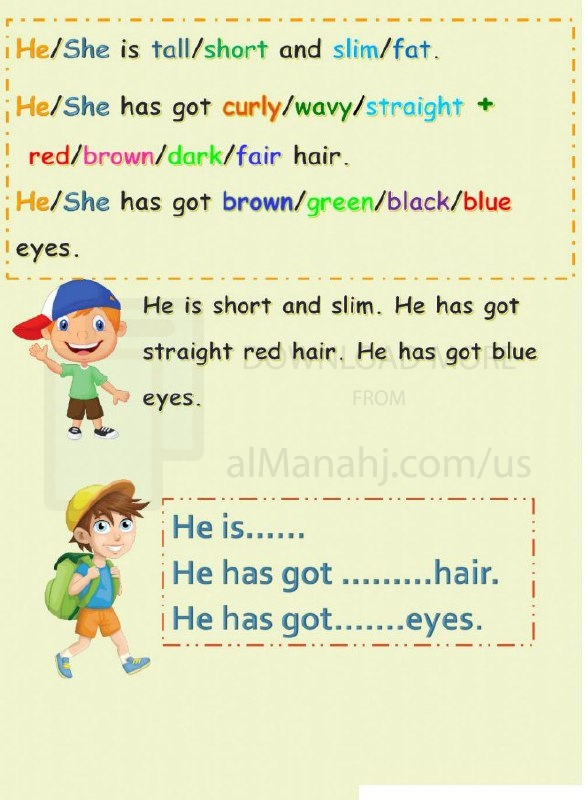| You are here: Almanahj Website ⇒ American curriculum ⇒ 2nd Grade ⇒ Physics ⇒ Term 1 | ||
|---|---|---|
Worksheet about Physical appearance speaking | ||
|---|---|---|
| Subject: Physics | ||
| 2nd Grade | ||
| Term 1 | ||
| Year: 2023/2024 | ||
| Size: 329.1KB | ||
| Number of clicks: 105 | ||
| Publish date:November 07, 2023 | ||
| Added by: Eman | ||
| Last download date: 2024-09-09 23:27:31 | ||
| Updated by: Eman9966 on 2023-11-07 18:54:58 | By: theodor Anni | |
| File info: When we refer to "physical appearance speaking," we are describing the act of using language to convey information about someone's physical appearance. It involves using words and descriptions to communicate how someone looks. Here's a description of what "physical appearance speaking" entails: 1. Observations and Descriptions: Physical appearance speaking involves making observations about a person's outward appearance and providing descriptive details. This can include aspects such as height, weight, body shape, hair color and style, eye color, facial features, complexion, and clothing choices. 2. Adjectives and Adverbs: When describing physical appearance, speakers often use adjectives and adverbs to provide more specific and vivid details. These descriptive words can convey information about someone's attractiveness, beauty, or unique features. For example, words like "tall," "slim," "curly-haired," "piercing blue eyes," or "distinguished-looking" can be used to paint a visual image of the person. 3. Context and Comparisons: Physical appearance speaking can also involve providing context or making comparisons to help others understand or visualize the person being described. This can include mentioning similarities or differences to well-known individuals, cultural references, or stereotypes. For instance, someone might say, "She has a hairstyle similar to that of a famous actress," or "He has a physique like a professional athlete." 4. Sensory Language: To enhance the description of physical appearance, speakers may also utilize sensory language that engages the senses. This can include describing the texture of someone's hair, the quality of their skin, or the way they carry themselves. By incorporating sensory details, the speaker can create a more vivid and immersive description. 5. Objective vs. Subjective Descriptions: When speaking about physical appearance, it's important to consider the distinction between objective and subjective descriptions. Objective descriptions focus on observable and factual attributes, while subjective descriptions involve personal opinions and interpretations of beauty or attractiveness. Depending on the context and purpose of the conversation, speakers may use a combination of both objective and subjective language. Describing physical appearance through speaking allows individuals to convey visual information about someone's outward appearance. It is a common form of communication used in various contexts, such as describing individuals to others, providing eyewitness accounts, or discussing appearances in a creative or analytical manner. | ||
| Downloading link Worksheet about Physical appearance speaking |
|---|
|
1699378085.pdf
The file is being prepared for download
|
| File images |
|---|
 |